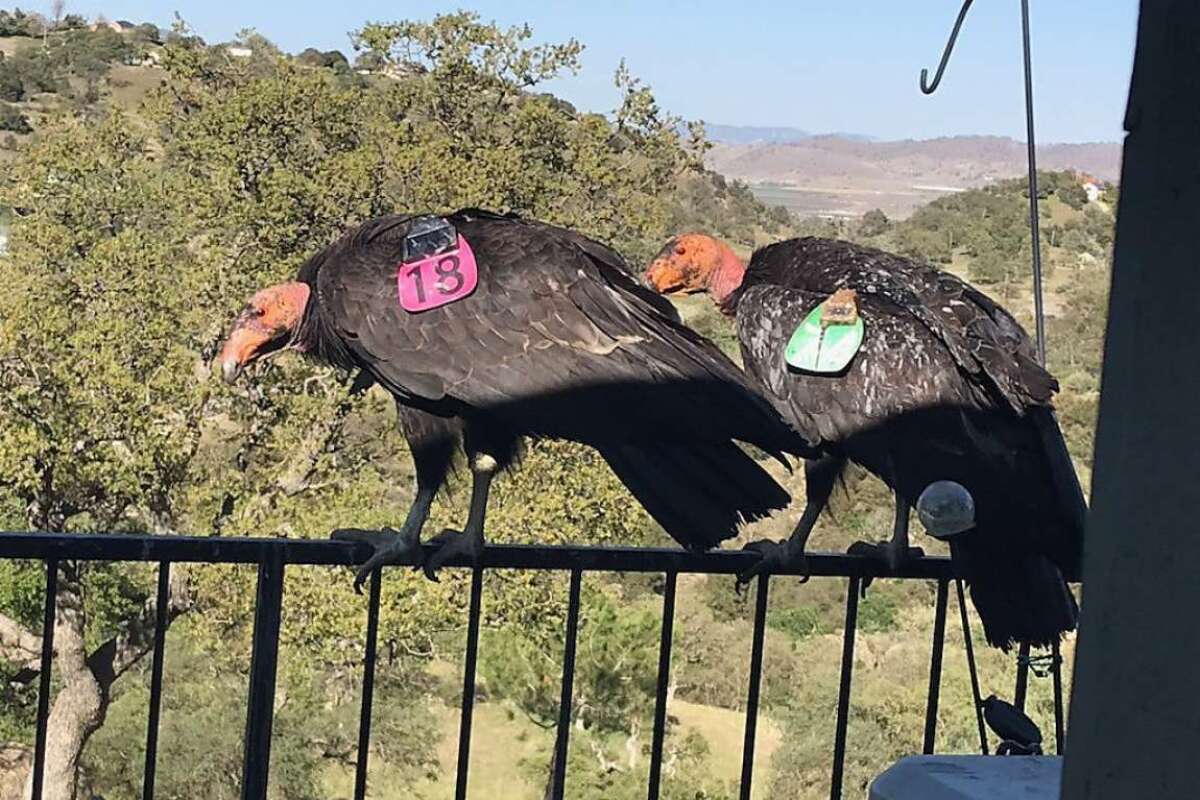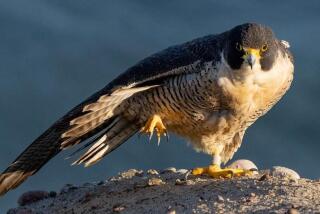Editorial: Turns out condors are party animals (and poopers). That’s worth celebrating

- Share via
A woman whose house looks out on the Tehachapi Mountains north of Los Angeles came home one day last week to find 15 to 20 California condors perched on her roof and outdoor railing. They had trashed her deck, knocking over plants and damaging a screen door. Although the birds turned out to be party poopers, literally, and a huge pain to clean up after — and stubbornly kept coming back all week — the good news is that after being nearly extinct, they have made a remarkable comeback.
Less than 40 years ago, all the California condors in existence were about the same number gathered at that house. There were 22 in the world in 1983. They were listed as endangered, and the U.S. Fish and Wildlife Service oversaw the capture of all of them and their recovery, starting with breeding programs at several zoos and a wildlife center, including the Los Angeles Zoo. As of the end of 2020, there were 504 condors.
California condors are the largest flying bird in North America, with a wingspan of nine and a half feet. Of those, 186 are flying wild today in California, evenly divided between the southern and central parts of the state. There are about 175 condors total in captivity, including hatchlings and the adults that mentor the young ones, all in seclusion away from humans, so that when the young birds turn a year and a half old, they are ready to be released into the wild. Each is tagged with a number and at least one transmitter so scientists can monitor their survival and get them back to check on their health.
Even though the use of lead ammunition has been outlawed in the state of California, 50% of known deaths among the condors come from lead poisoning. Scientists and wildlife experts are still trying to get ranchers and hunters to use nonlead bullets.
It’s no wonder the birds showed up near Tehachapi. Condors love a high-up vista as much as anyone, especially on a deck from which they can launch themselves into the uplift of a warm air current, spread their wings and soar. They are gregarious birds and simply flocked to the spot where they saw others. They could have been gorging themselves on a nearby deer or elk kill and found water and some respite at this particular house.
Besides, says Mike Clark, an animal keeper who works with condors at the L.A. Zoo, this is traditional condor territory. It’s people who started building houses there more recently. He and other experts suggest hazing birds with loud noise or a squirt of a garden hose to get them to go away.
The last time there were this many condors in that area was a century ago. “For the same reasons they liked it before, they are finding it again,” says Clark.
That’s worth a party.
More to Read
A cure for the common opinion
Get thought-provoking perspectives with our weekly newsletter.
You may occasionally receive promotional content from the Los Angeles Times.










